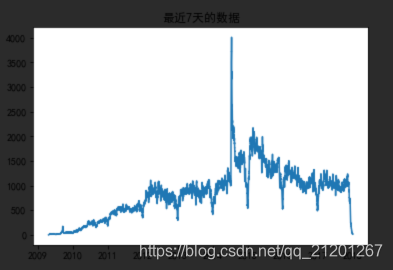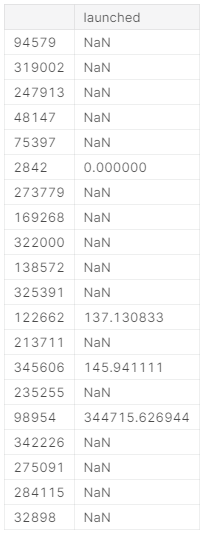learn from https://www.kaggle.com/learn/feature-engineering
上一篇:Feature Engineering 特征工程 2. Categorical Encodings
从原始数据创建新特征是改进模型的最佳方法之一
例如,数据有很长连续时间的,我们可以把最近一周的提取出来作为一个新的特征
1. 组合特征
最简单方法之一是组合特征
例如,如果一条记录的国家/地区为"CA",类别为"Music",则可以创建一个新值" CA_Music"
可以从所有分类特征中构建组合特征,也可以使用三个或更多特征进行交互,但是效果往往会变坏
interactions = ks['category']+'_'+ks['country'],像python一样直接相加interactions.head(10)
0 Poetry_GB
1 Narrative Film_US
2 Narrative Film_US
3 Music_US
4 Film & Video_US
5 Restaurants_US
6 Food_US
7 Drinks_US
8 Product Design_US
9 Documentary_US
dtype: object
- 将新特征
assign进数据
label_enc = LabelEncoder()
data_interaction = X.assign(category_country=
label_enc.fit_transform(interactions))
data_interaction.head()

2. 过去7天的数据
launched = pd.Series(ks.index, index=ks.launched, name="count_7_days").sort_index()
# 数据值为索引, 新的索引为建立的时间,新特征名称, 按索引(时间)排序
launched.head(20)
launched
1970-01-01 01:00:00 94579
1970-01-01 01:00:00 319002
1970-01-01 01:00:00 247913
1970-01-01 01:00:00 48147
1970-01-01 01:00:00 75397
1970-01-01 01:00:00 2842
1970-01-01 01:00:00 273779
2009-04-21 21:02:48 169268
2009-04-23 00:07:53 322000
2009-04-24 21:52:03 138572
2009-04-25 17:36:21 325391
2009-04-27 14:10:39 122662
2009-04-28 13:55:41 213711
2009-04-29 02:04:21 345606
2009-04-29 02:58:50 235255
2009-04-29 04:37:37 98954
2009-04-29 05:26:32 342226
2009-04-29 06:43:44 275091
2009-04-29 13:52:03 284115
2009-04-29 22:08:13 32898
Name: count_7_days, dtype: int64
发现最顶上的7个数据是错误的(时间一样),本节里暂时不去考虑
.rolling('7d'),设置一个窗口
count_7_days = launched.rolling('7d').count()-1 # -1表示不包含当前日期
print(count_7_days.head(20))
launched
1970-01-01 01:00:00 0.0
1970-01-01 01:00:00 1.0
1970-01-01 01:00:00 2.0
1970-01-01 01:00:00 3.0
1970-01-01 01:00:00 4.0
1970-01-01 01:00:00 5.0
1970-01-01 01:00:00 6.0
2009-04-21 21:02:48 0.0
2009-04-23 00:07:53 1.0
2009-04-24 21:52:03 2.0
2009-04-25 17:36:21 3.0
2009-04-27 14:10:39 4.0
2009-04-28 13:55:41 5.0
2009-04-29 02:04:21 5.0
2009-04-29 02:58:50 6.0
2009-04-29 04:37:37 7.0
2009-04-29 05:26:32 8.0
2009-04-29 06:43:44 9.0
2009-04-29 13:52:03 10.0
2009-04-29 22:08:13 11.0
Name: count_7_days, dtype: float64
%matplotlib inline
import matplotlib.pyplot as plt
plt.rcParams['font.sans-serif'] = 'SimHei'
plt.plot(count_7_days[7:]);
plt.title("最近7天的数据")
plt.show()

- 把新特征数据,
reindex后,跟原数据合并
count_7_days.index = launched.values
count_7_days = count_7_days.reindex(ks.index)
count_7_days.head(10)
0 1487.0
1 2020.0
2 279.0
3 984.0
4 752.0
5 522.0
6 708.0
7 1566.0
8 1048.0
9 975.0
Name: count_7_days, dtype: float64
X.join(count_7_days).head(10),join合并

3. 上一个相同类型的项目的时间
比如,电影之类的上映,如果同类型的扎堆了,可能被对手抢占了份额
def time_since_last_project(series):
return series.diff().dt.total_seconds()/3600
df = ks[['category','launched']].sort_values('launched')
# 按时间排序
timedeltas = df.groupby('category').transform(time_since_last_project)
# 按分类分组,然后调用函数进行转换,算得上一个同类的时间跟自己的间隔是多少小时
timedeltas.head(20)

- NaN 表示该类型是第一次出现,填上均值或者中位数
- 然后跟其他数据合并之前需要把index调整成一致
timedeltas = timedeltas.fillna(timedeltas.median()).reindex(X.index)
timedeltas.head(20)

4. 转换数值特征
Transforming numerical features,一些模型在数据分布是正态分布的时候,工作的很好,所以可以对数据进行开方、取对数转换
plt.hist(ks.goal, range=(0, 100000), bins=50);
plt.title('Goal');

plt.hist(np.sqrt(ks.goal), range=(0, 400), bins=50);
plt.title('Sqrt(Goal)');

plt.hist(np.log(ks.goal), range=(0, 25), bins=50);
plt.title('Log(Goal)');

- log 转换对基于树的模型没有什么用,但是对线性模型或者神经网络有用
- 我们需要转成新的特征,然后做一些测试,选择效果最好的转换方法。